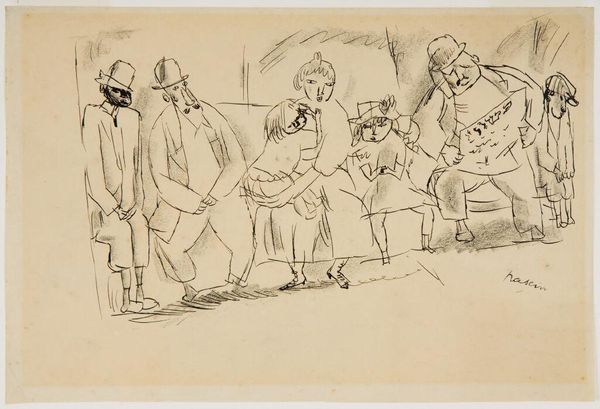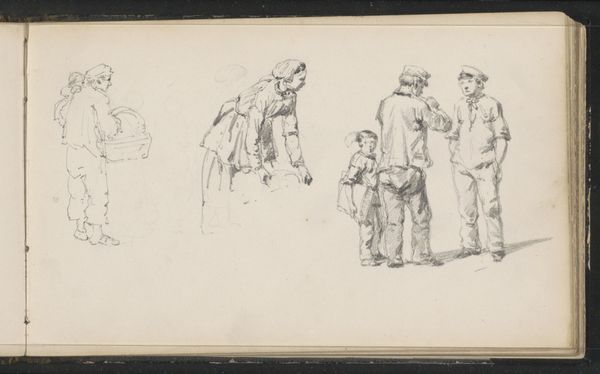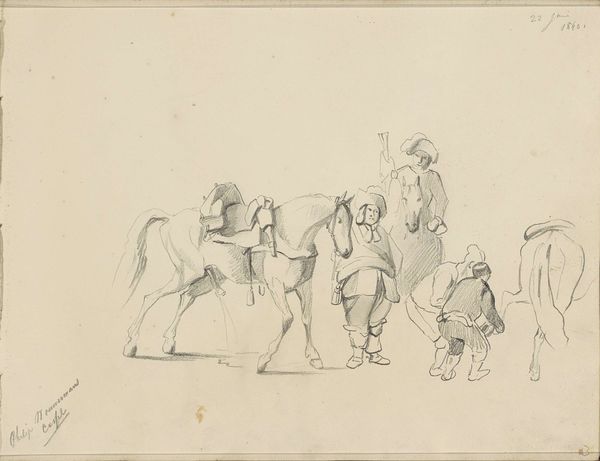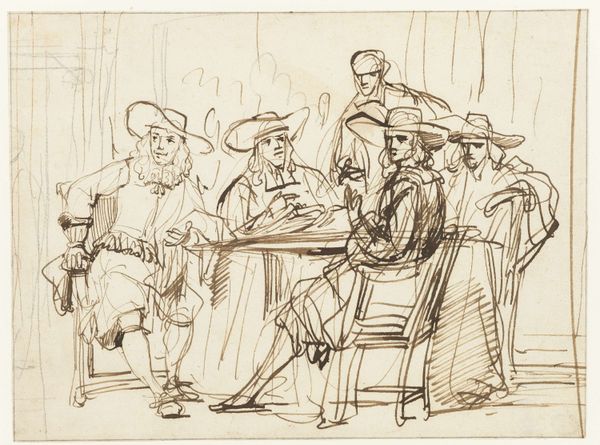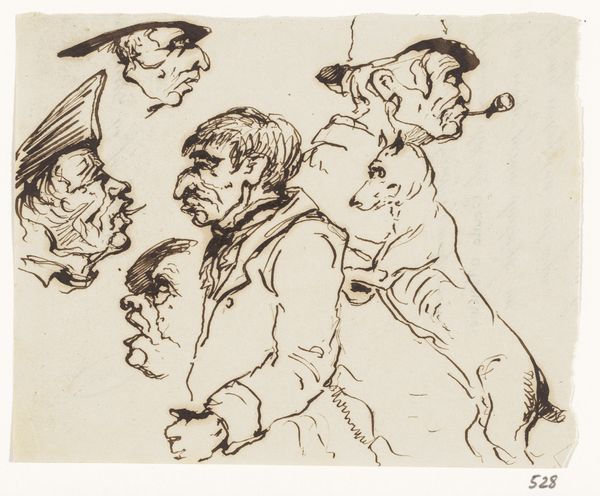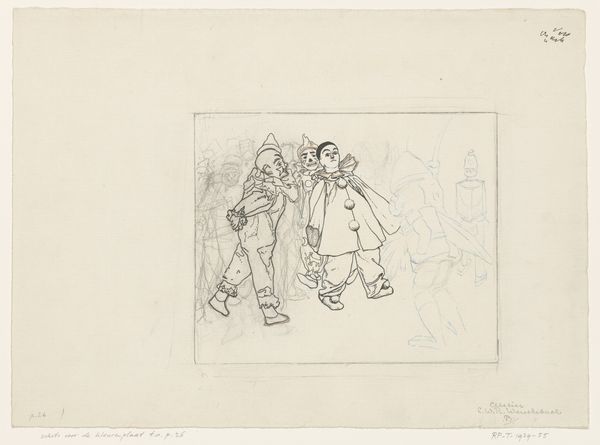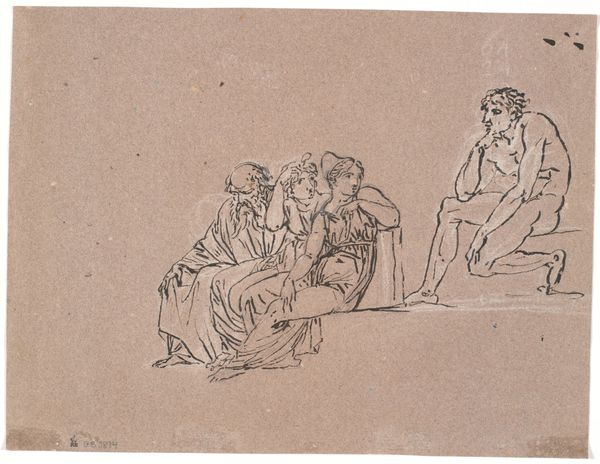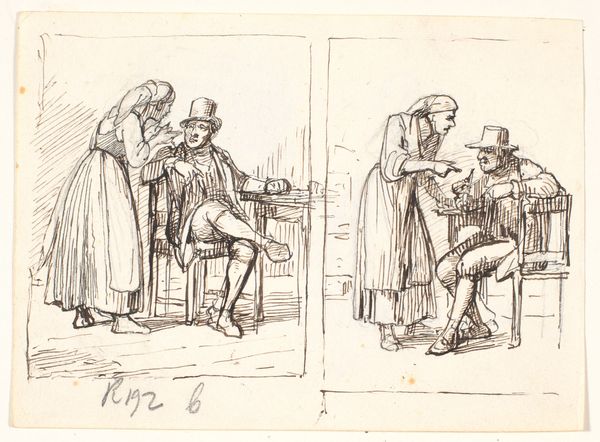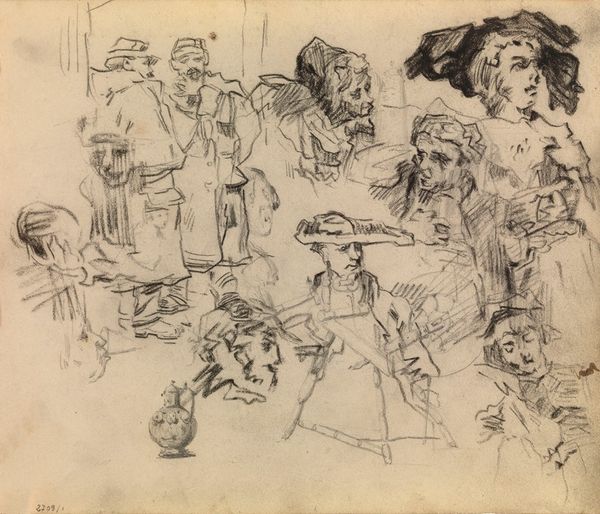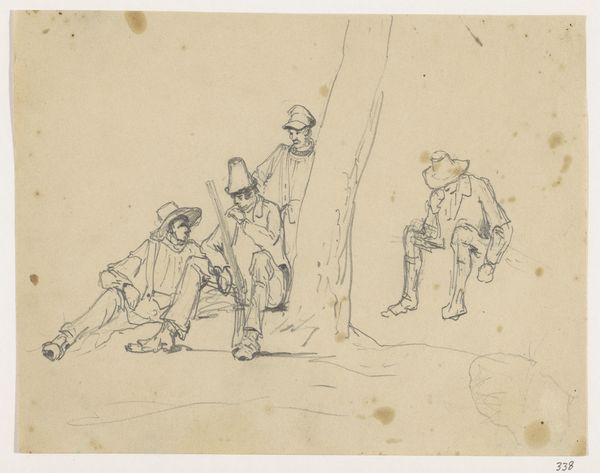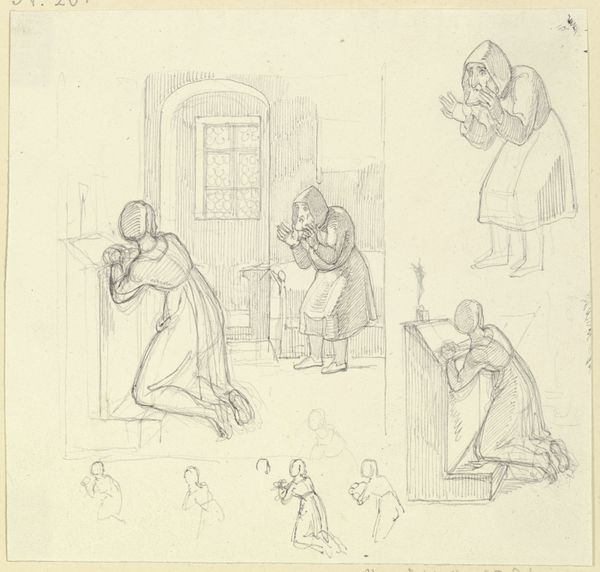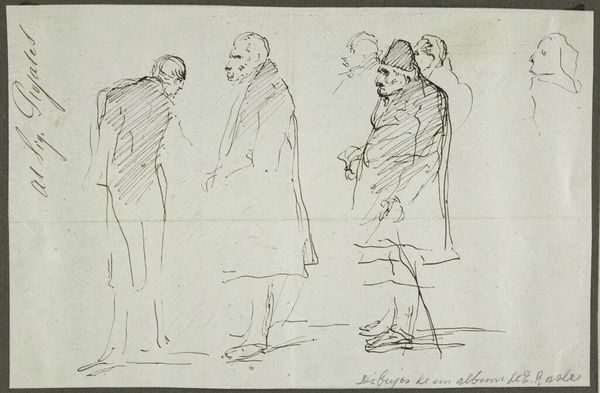
drawing, pencil
#
drawing
#
figuration
#
pencil
#
genre-painting
#
academic-art
#
realism
Dimensions: 183 mm (height) x 222 mm (width) (bladmaal)
Curator: This is Wilhelm Marstrand’s pencil drawing “Tobakkens glæder. Rygende drenge,” or “The Joys of Tobacco. Smoking Boys,” created sometime between 1810 and 1873. What are your first thoughts? Editor: My first thought is…complicated. It looks like an almost anthropological observation of youthful rebellion, yet something about that casual acceptance of underage smoking rubs me the wrong way. It feels distant. Curator: Perhaps. But let's consider the artistry first. Note the loose, almost frenetic linework. Marstrand uses hatching and cross-hatching to create depth and shadow, focusing our attention on the figures. See how skillfully he suggests volume with minimal lines? Editor: And how these techniques also almost normalize the scene, reinforcing the idea of "boys will be boys." The "joys" in the title suddenly seems ironic, given our contemporary understanding of addiction and health. Where do we place the responsibility for such normalization, especially given the artist's social standing? Curator: Interesting. Though could it be argued that the various sketches capture the nuances within these moments, inviting reflection more than endorsement? Notice how not all the boys appear jovial, some seem quite sullen. This visual diversity complicates any single, straightforward message. Editor: Fair, but it's difficult to ignore the broader cultural context. These are not simply individual expressions; they are representative of a time and class where such habits were perhaps tragically commonplace. Consider too, the ethical questions raised when artists observe such inequities without comment. Curator: I grant you that. Viewing it from a Formalist stance, however, highlights a masterclass in observational drawing, where Marstrand captures fleeting gestures and expressions. It prompts discussion, as we can clearly see. Editor: Absolutely. Understanding historical representation and aesthetic mastery simultaneously enables us to really engage critically with art’s power. It urges us to think about the conversations images like this were intended to encourage.
Comments
No comments
Be the first to comment and join the conversation on the ultimate creative platform.

